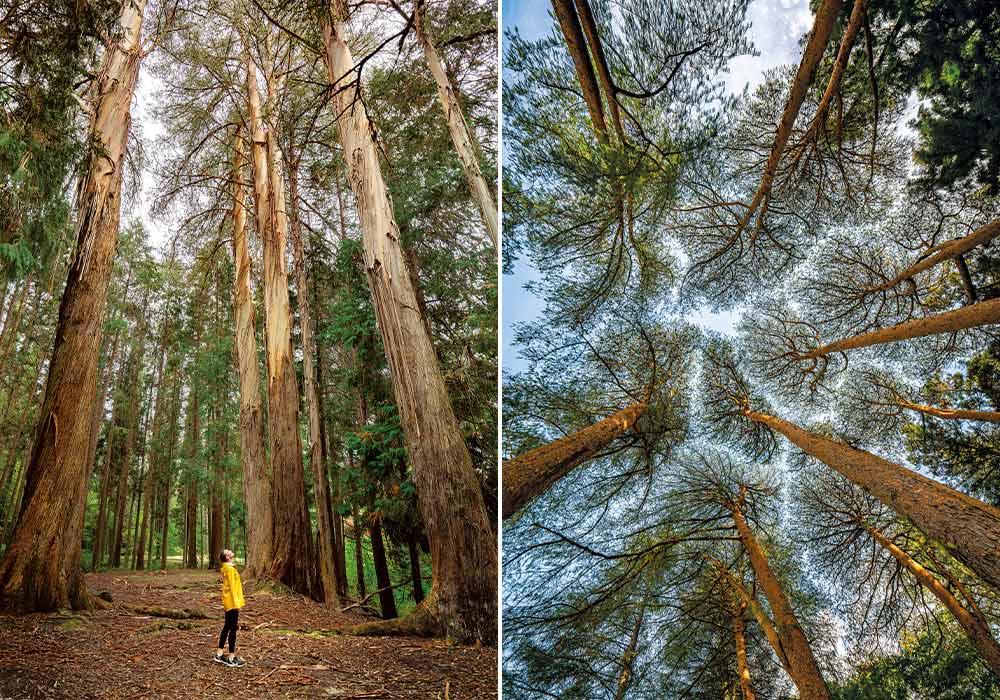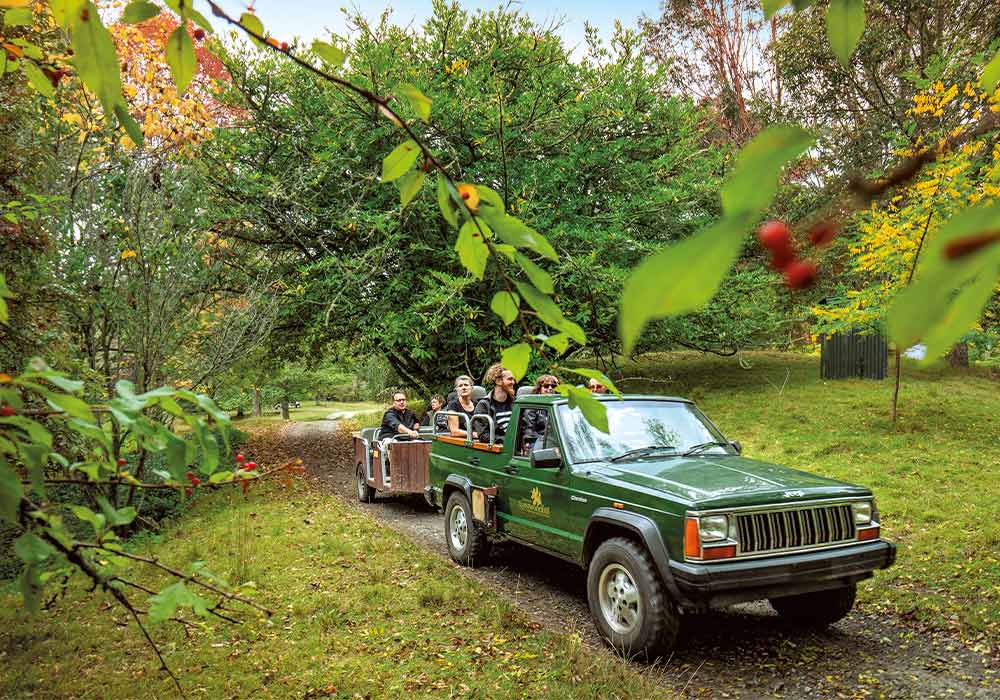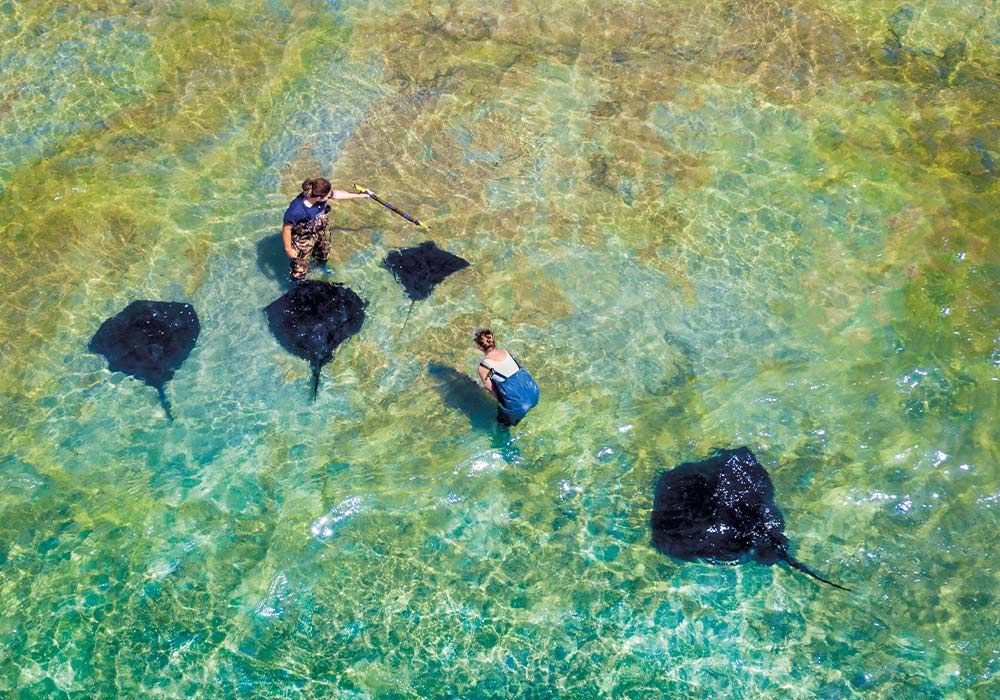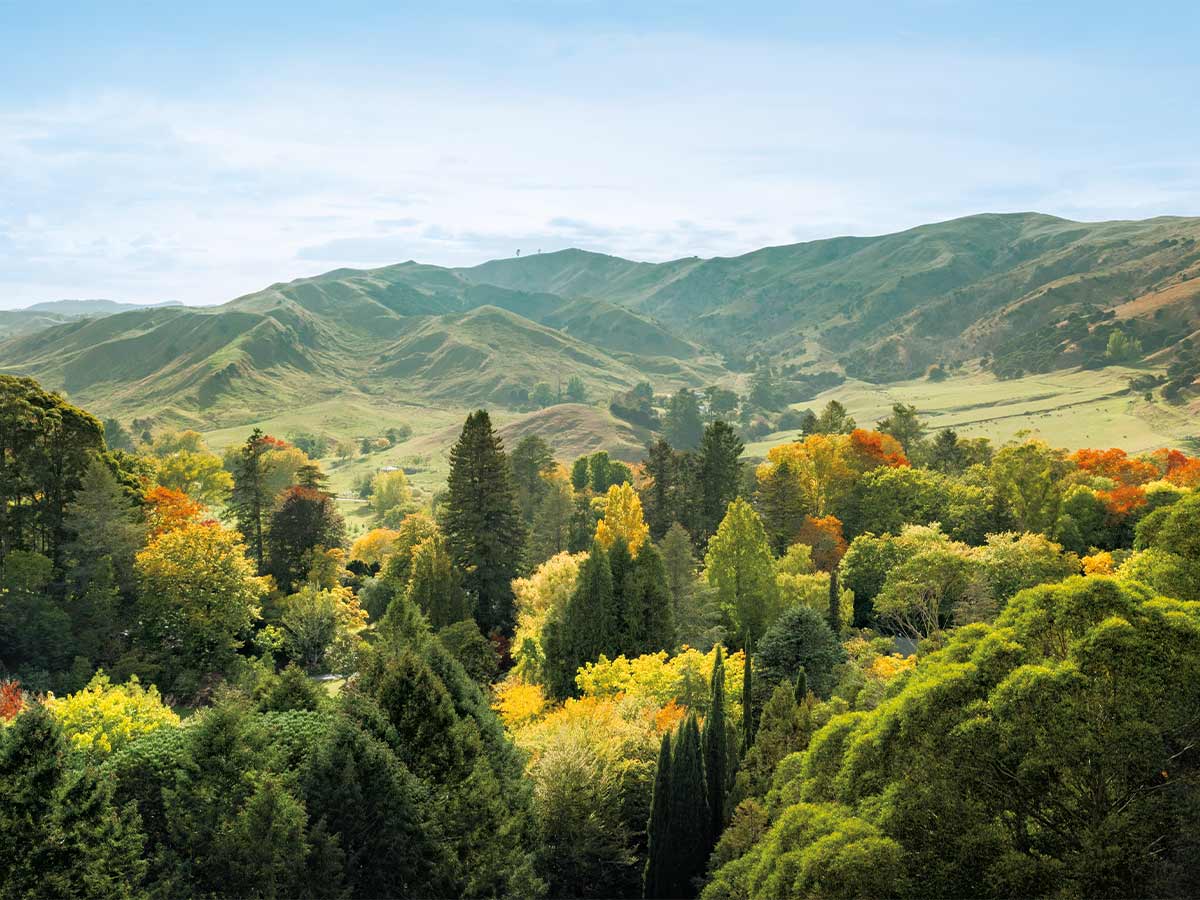Hands down one of the most spectacular road trips in Aotearoa has to be the route that leads to the peninsula city of Gisborne. Setting off from Whakatane, you can choose to travel via the coast and drive right around the East Cape on SH35, or you can head inland through Waioeka Gorge. Either way, the scenery will astonish, says Elisabeth Easther.
If you take the coastal route, you’ll be treated to 335km of dramatic ocean vistas, with numerous glorious spots to stop, whether overnight or just to stretch your legs. Take a break in Te Kaha for a swim, or in Te Araroa to admire Te Waha-o-Rerekohu. At 600 years old, this grand old tree is thought to be the world’s oldest pohutukawa. If you’ve got the puff, tread the steps up to the iconic East Cape Lighthouse on Otiki Hill, although, some drivers can find the narrow gravel road to the lighthouse a bit nerve-wracking (just saying).
Heading on towards Gisborne, check out the magnificent wharf in Tolaga Bay, which at 660 metres, is the longest of its kind in the Southern Hemisphere. Not far from the wharf is the entrance to Cook’s Cove Walkway, a delightful six-kilometre return trek that takes about two-and-a-half hours and crosses farmland, passing through bush and forest to arrive at the photogenic Hole-in-the-Wall. If you’re feeling lazy, just go as far as the first lookout about 30 minutes in but do note, this trail closes for lambing from 1 August to Labour Weekend.
Alternatively, drivers can take the shorter route along SH2 through Waioeka Gorge. Just 140km from Ōpōtiki to Gisborne, you can easily cover this in a day and still have plenty of time to explore the many riverside lookouts and bush paths.
Once in Gisborne – a splendid seaside city of vineyards, sunshine, and surf – visitors will find themselves faced with an extensive range of excursions, because, for a small city (pop. 35,000), there’s a lot going on in this neck of the woods.
Branching out

Right: Stunning (and socially distanced) tree canopy
While on the topic of woods – one of Gisborne’s most divine attractions is Eastwoodhill. The National Arboretum of New Zealand, this is a 135-hectare tree library just 34km from the centre of Gisborne.
Renowned around the globe, the seeds of Eastwoodhill were sown in 1910 by Douglas Cook, who as a young man bought a sizeable parcel of scrubland that he slowly transformed into a well-planted farm. When WWI broke out, Douglas volunteered, only to have his right eye damaged by mortar fire in France, whereupon the young East Coast farmer was sent to Britain to recuperate. Still reeling from the horrors of trench warfare, Douglas found solace among the trees of the stately homes, and he pledged to plant a more extensive forest on his farm.
It’s thought that many returned servicemen headed home from The Great War with their pockets full of seeds, but Douglas took that botanical smuggling a giant step further and parcelled up thousands of saplings. On a voyage that took months at sea (this pre-dates the Suez Canal), Douglas’ plethora of hessian-wrapped plants had to make do with little fresh water, yet miraculously most of them made it. Once back in New Zealand, such was Douglas’ haste to get the thirsty young trees into the ground, he planted them in no particular order and the ones that survived, thrived.
When I first read about Eastwoodhill many years ago, I was enchanted, although, I have to confess the story that most tickled my fancy portrayed Douglas Cook as something of a nudist who spent much of his time among the trees wearing just one gumboot. Why one gumboot? So, he could still use his spade. Giggles about nudity aside, I’ve visited Eastwoodhill several times now and enjoyed the tremendous trees in all seasons, from the wonderous symphony of autumn shades to the new growth of spring. Winter is also a fine time to visit with snowdrops and daffodils just starting to appear and the café serving warming soup and hot scones. As for summer, it’s perfect for picnics on the homestead lawn, while younger visitors get a lot of mileage out of the playgrounds.
A whole world of choice

Today, Eastwoodhill is home to at least 15,000 trees, with 7000 different species from 67 countries, as well as numerous native specimens with Douglas Cook’s spectacular forest legacy offering visitors the opportunity to walk the world in trees. Keeping his dream alive, a small team of staff is assisted by a veritable army of volunteers who put in countless hours to ensure the arboretum stays true to its manifesto of Maintain, Improve, Educate.
Colour-coded paths lead visitors to specimens from Argentina, China, Canada, Colombia, Alaska, and Madagascar with the splendid glade of Sequoia trees expected to live for two thousand years. There are also impressive English elms, magnificent magnolias, and robust rhododendrons. So how might a visitor tackle such a mammoth herbaceous haven?
One handy tip: we recommend you plan ahead and book a parking spot for your motorhome because self-contained vehicles are welcome to overnight here for the modest sum of just $10 per camper. There are also studio units and bunk rooms for those without liveaboard set-ups. Once you’ve set up camp, head to the visitor centre where you’ll find a wealth of information and a range of gorgeous gifts. Chat with one of the friendly volunteers, then consult the map of trails that weave through the vast array of exotic and native trees.
The Blue Walk is an easy two-kilometre ramble. The flattest of all the walks, it travels through the towering conifers of Cabin Park and the deciduous trees of The Circus, before heading to Corner Park and Pear Park.
How about the extended version of the yellow walk? At 3.8km, it does have some steep-ish sections, especially when you turn off at Basin Head to zigzag up to Arataitai, but being the park’s highest point, you’ll be rewarded with glorious views. The 2.3km Brown Walk combines the conifers of Orchard Hill with the deciduous specimens of Douglas Park. This is a real ripper in autumn, while the easy 1.7km Red Walk is a darling combination of native forest and giant oaks. If you’re feeling frisky, the 5.1km Great Walk offers up the deepest insight into Eastwoodhill, from the lowest to the highest point.
The trails cover around 25km, and there are a few steep sections, so you’ll want to wear sturdy shoes, especially after rain. But whichever way you decide to explore this magnificent tree museum, the thing that really stands out – aside from the trees themselves – is how much one person can achieve when they put their mind to it.
News to hand
Eastwoodhill is currently looking to extend its motorhome and caravan facilities as part of a collaboration with The NZ Motor Caravan Association. The project is expected to be completed by summer, which means the $10 parking fee is expected to rise.
For more information, visit eastwoodhill.org.nz.
Additional Gisborne delights

Stingray Experience @ Dive Tatapouri
One of the world’s finest marine experiences. Don sturdy waders, then head to the reef where local guides will share affectionate tales of aquatic wildlife while stingrays and kingfish glide around your legs.
Gisborne Railbikes
Pedal specially designed tandem e-bikes along disused rail lines. Whether you choose the one-hour Waipaoa Bridge ride, the 32km Beach Loop or the 22km Mahia Coastal Ride, you’ll enjoy breathtaking views of coast and countryside.
Hang 10
Gisborne is New Zealand’s own surfers’ paradise. Whether you have your own board or you take a lesson with a local surf school, you’ll have a blast. Depending on the conditions, City Beach, Wainui Beach, or Makorori Beach are popular breaks.
tairawhitigisborne.co.nz/see-and-do/surfing/where-to-surf/






